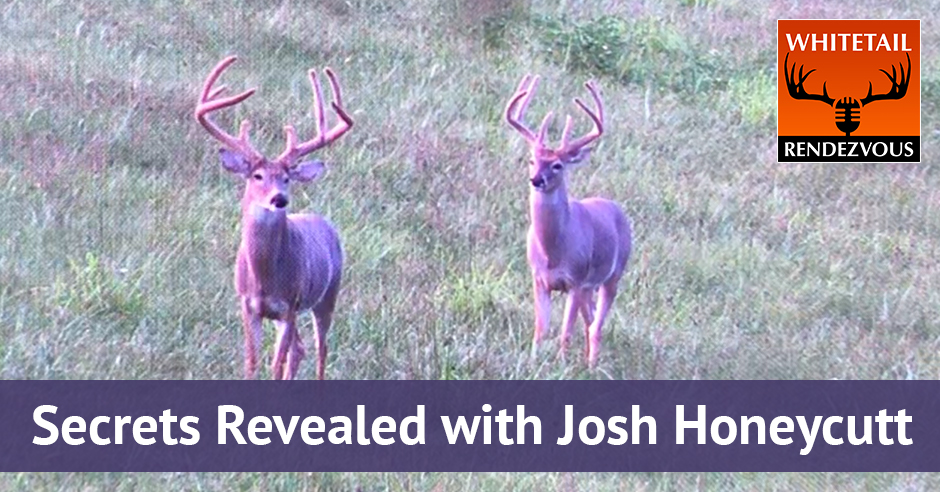
—
Listen to the podcast here:
Secrets Revealed with Josh Honeycutt
This is part two of Josh Honeycutt, Deer Hunting Editor for Realtree.com. We’re going to be talking about the early season. Josh, welcome to the show. Let’s jump right into it. Early season has been very good to you. Let’s share with the audience why and some tips and techniques they need to think about for early season hunting.
I don’t do anything but hunt during the early season as most do. There’s no secret powder you can go out there and dump on the ground and let the deer come in and make everything okay. If you’re not seeing them, I’m not saying anything bad about vacating. I’m making a joke there. There’s no secret formula once you get into the season. The secret formula is all the work that you’ve done prior to the open. All the stuff that you did during the postseason, everything you did during the summer, you’ve done the work already. All you got to do is pull the trigger.
Come opening day, I will do one more camera check on all of my cameras prior to the opener. I don’t like to do it the day before the opener, about a week or so, maybe four or five days before the opener. I will continue glassing from afar all the way up to the afternoon before the hunt as long as I can get in there and do that without walking near. That’s all in an effort to finalize what deer I’m going to end up hunting. If I have multiple target deer that I’m considering, I will choose between the top two or three that I’ve got on my “hitlist” and see which one is the most mature, which one’s the biggest, which one’s the most huntable, which one’s the most daylight active and which one has the best pattern to go on. I’ll mash all those things up into unofficial formula in my head and decide what to do on opening day.
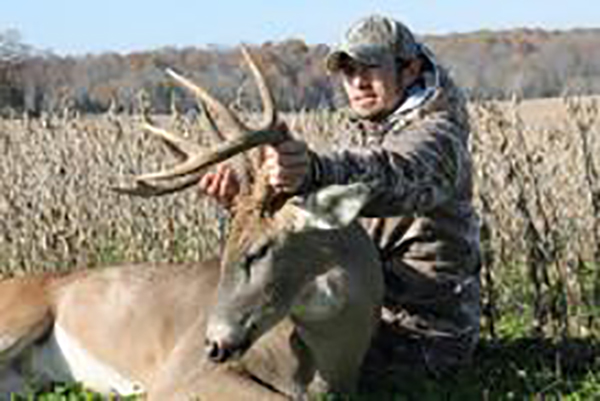
I’m not as big on hunting mornings during the early season. I’m not saying that you should. There are definitely situations where you can and where you should. It all depends on how your property is laid out, how your entry and exit routes are and where your bedding areas are in correlation to your food destinations. There might be situations like geography and terrain depending on where you can get in there and hunt deer in the morning without spooking. If you can do that and you think you do have a legitimate shot at killing a deer over morning during the early season, go for it. Most of my properties, there are very few instances that I’ve seen throughout the years where I could get in there and do that. I don’t do it very often, but it’s mostly because the properties that I hunt don’t layout very well for me to do so.
When people ask me, they said, “Should I hunt in the morning or should I hunt in the evening?” I say in the evening because the deer they’ve seen probably they’ve seen coming either to feed, coming out of the woods or coming to water. It’s water or food because when it’s hot, they’re going to water. When I think about that, what’s your recommendation, no matter where they are in the country?
In my mind, unless it’s a dynamite spot, you can get into without bumping a deer in the morning. You’ve been spending all this time and effort glassing from afar, checking trail cameras, monitoring trail cameras. You focus all summer solely long throughout the preseason trying to hone in on afternoon patterns. You’re not out there and glassing from afar, generally not at daybreak. Everything you’re doing throughout the summer, at least in my mind is focused on that afternoon bed and feed pattern. That’s what all my preparation has been around. Why go in there on opening morning and potentially screw up all of that preseason work? You’ve been focused on those afternoon patterns. If you think you have a situation where you can go in and kill that deer opening morning, definitely do. I’m not discouraging that at all, but more times than not, you’re going to do more harm than good.
Deer don’t like change. Any change gets them on their feet. Share on XOne thing people have asked is, “Bruce, where did the deer go? All of a sudden the summer pattern is over and then they just become a ghost.” What’s up with that?
There’s a lot of factor in there. At least here at home, I see the deer using that same summer patterns until about the middle of September. Some of them go longer, some of them go shorter. Some deer change over to their fall patterns the first week of September. Some don’t do it until the last week of September. It’s different for every deer, but there are several factors in play. Primarily, you’ve got those bachelor groups that are going to break up. Whenever they break up, traditionally that’s when they start shifting into their fall ranges. I’ve seen about 50% of bucks plus or minus are going have a different fall range than the summer range. That’s at least what I see here where I hunt.
That’s what’s happening, but why is it happening? If you have a deer on your camera and you have an advantage as well, there’s a 50% chance more or less that his fall range simply isn’t where the summer range is. Other things are in play too. At that point, you’ve had some hunting pressure. That’s a week to two weeks into the season, if not more. If it’s the end of September the deer might start reacting to that hunting pressure. I think the biggest factor is changing food sources. There’s a huge shift throughout much of the country from mid to late September when it comes to food sources. They’ve been eating green soybeans and green food sources all summer long. Let’s not even restrict this to ag country. Let’s put it over on the hill country of Eastern Kentucky and Eastern Ohio or wherever you might be where there’s no ag or very little.
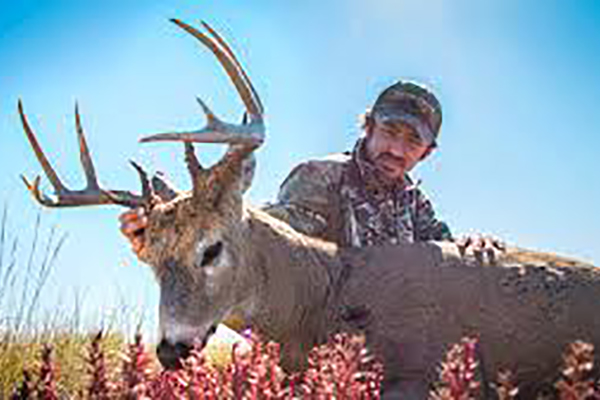
Deer had been eating green food sources all summer long. That’s what they’ve been keying on. They’ve been eating soft mast, depending on what type of soft mast. Some soft mast doesn’t start dropping until September, early October. That’s not true in every instance. If you get down into the south, there’s some more soft mast that they key on late summer or early fall. The biggest transition is they’re transitioning from those green food sources to the hard mast. That’s when you’re acorn start dropping. You’ve got your white oaks, red oaks and pin oaks, all of the huge long lists of oak trees that start dumping acorns around the middle to end of September. That changes things and that can even take places late as early mid-October too, depending on when your tree starts dropping. It’s different every year and it’s different for every place.
That’s a broad statement, but whenever the acorn start dropping and hard mast starts dropping, that’s going to change what deer do. It’s going to make it seem as if they’re not moving during daylight. Most times they still are though. They’re moving during the daylight in different areas. Granted if the oak trees are fairly close to their bedding areas, all they do is stand up and start eating. They’re still moving in daylight like they did whenever they were traveling 100 or 200 yards to get to a soybean field during the summer. That food source is much closer in general to their bedding areas than it was during the summer. It’s not that deer don’t want to move in daylight, it’s just they don’t have to because the food is much closer to the bed.
Let’s go back to the oaks. Some like white oaks and then you get to red oaks. There are a whole variety of oak trees. The only thing I can say is to know what’s on your ground and have journals about what specific tree drops at what date typically. I know we’re getting analytical about this, but deer knows what tree is going to drop the best protein form and when they do it, like I’ve seen elk circle them out on the elevation where the mushrooms are coming up. I’ve seen it in New Mexico. I’ll never forget it. We sat on the top and they would circle the mountain eating mushrooms. If you know that, then you can get ahead of them because you can’t call them off the food. They’re not going to do it but you can intercept them. From what I understand, whitetails are the same way. What are your thoughts on that?
Early season is my favorite time to hunt mature whitetails. Share on XYes, I think so. When it comes to those oak trees, at least around here, deer prefer white oak over any of the others. It has to do with the level of bitterness, acidity and within that acorn. The tannin levels are much better in a white oak than red oak. That’s why you have a white oak here and a red oak here. If they drop on the same day, all your deer are going to be under that white oak tree. It’s something to consider. I have a journal, that’s a great point in my mind. Having the historical dates of when they drop, listing what type for oak it is whether it’s a white, red, pin, black or water oak, whatever type of oak it is. That’s crucial and very important, especially for an area that has a lot of oak trees.
Some people they’ll watch deer all season long and then they get mystified when they switch over. The deer don’t have to go 50 yards from where he or she is bedding to get food.
Especially if they’re bedding in timber, some early successional habitat, some CRP, just thicket or just briars and brambles. If they’re bedding in locations that are not already got some big timber in it, that’s not the case. They still got to get up and travel. If you’re hunting properties that have a lot of big mature timber on it or maybe there’s some thick growth that’s close right on the fringe or some big mature timber that has some good oaks that are dropping, that’s the case. You don’t have to go very far. Say you’ve got an early successional habitat, it’s thick, gnarly, growed up, there are beds all in it and you’ve got a row of mature hardwoods. Then you’ve got the edge of your field and big soybean down where all summer long, they’ve been up, they might not have been bedding all the way up as they grow.
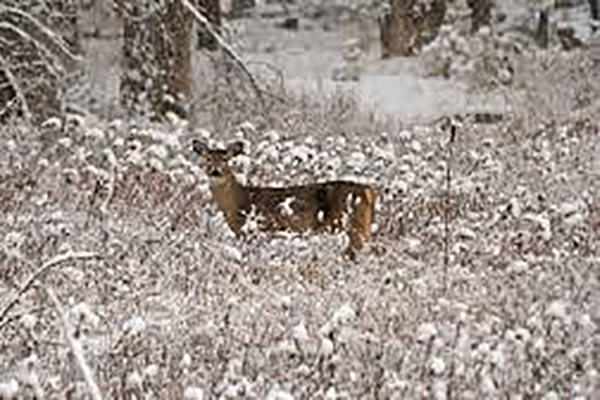
They may have been bedding on the edge of that food. For the sake of the story, let’s say they’ve been bedding up in that thick stuff all along. All summer long, they’re traveling through those hardwoods. Those hardwoods aren’t dropping yet. They’re getting all the way down to the soybean field and you’ve got a tree stand or a camera or something right on the edge of that soybean field and all summer long you see deer there like clockwork in daylight activity. Things then change. That soybean field starts turning and it’s got a lot of yellow leaves in it or it’s all yellow leaves or maybe the leaves that fell in off already. The acorns are started dropping. All of a sudden you don’t get any pictures on that soybean field until maybe 10:00 PM or 12:00 at night when those deer start getting out and start meandering around.
What’s happening is it’s not that they don’t want to move during daylight. It’s not that they’ve become nocturnal. It’s the simplest food and bed correlation and the relation of the two locations. They’re not getting to that field anymore. They’re going from that thick habitat where they’re bedding at during the day, right there next to them to the south. They’ve got all those oak trees and they may sit there and feed on acorns for a few hours before they get out and start going elsewhere. It’s something to keep in mind, especially when you’re looking at these changing times throughout the season. That’s not something that should have effect anybody. There have been very few seasons where I’ve seen that transition happen around the opener. I can recall one year where that happened. That’s not something that you have to worry about until we get toward the middle of September. Generally, it’s happening around the end of September when that starts to take effect.
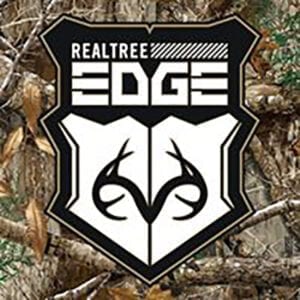 One thing I’d like to touch on is cold fronts because we got summertime. We typically don’t have huge differences, deltas and variances in temperature. A storm blows through and it might drop five degrees, ten degrees or maybe more, but it seems in the fall when we have a cold front come through, it changes the deer activity a lot more. Let’s talk about that.
One thing I’d like to touch on is cold fronts because we got summertime. We typically don’t have huge differences, deltas and variances in temperature. A storm blows through and it might drop five degrees, ten degrees or maybe more, but it seems in the fall when we have a cold front come through, it changes the deer activity a lot more. Let’s talk about that.
Cold fronts are huge. It doesn’t matter what time of the year you’re in, what part of the season it is. In my mind, they’re big year-round season long. I feel the first cold front of the season is going to be your biggest and most prominent, effective cold front to hunt during the month of September. That applies to the people who hunt in states that don’t open up until October as well. It doesn’t matter when your opener is, especially if you hunt in September where we are getting a ton of consistent hot weather. You get that first good break, you get that first good twenty-degree drop in and you get that perfect cold front that everybody dreams about. If that happens during September, it’s a little more effective than those who have to wait until October to hunt. With that said, it’s always good, but you’re 100% right. That first cold front is probably the best bet as far as hunting cold fronts during the season.
The secret formula is in all the work that you've done prior to hunting. Share on XWhy does it increase behavior?
It’s not necessarily a difference in the deer’s behavior. In my mind, it more or less has to do with hunting pressure. I’m coming at this from a point where every property a hunt, I’m sharing permission and I don’t have sole control over any property that I hunt. Cold fronts had been talked about and written about for years and decades even. People are in tune with cold fronts. The hunters are keeping an eye on those. The reason I say the first one is the key one is that you’re probably not going to have as much hunting pressure when that first cold front hits as you will that second and third one. There might be as many hunters in the woods on that first, second or third one, but the deer haven’t had time to react to that pressure yet.
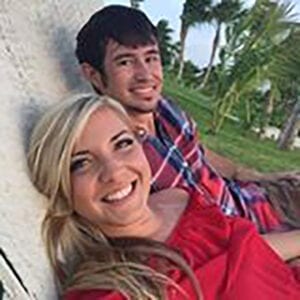 You’re correlating the cold front comes through even though everybody’s taking their calendar set. On any given piece of wood, the deer aren’t in tune to the pressure yet. Is that basically what you’re saying?
You’re correlating the cold front comes through even though everybody’s taking their calendar set. On any given piece of wood, the deer aren’t in tune to the pressure yet. Is that basically what you’re saying?
Yes, I don’t think that a cold front in September has any different effect on a deer than a cold front and October and November, but it goes back to any factor that you want to throw out there and talk about. The earlier, the better when it comes to the hunting pressure. I think deer become wiser and wiser throughout the season. You’re going to see a little bit more daylight activity. You’re going to see deer move further from their beds on that first cold front of the season, especially if it falls within the first few days of the opener. You’re going to see much more of a reaction and much more daylight activity on that first cold front of the season than you will maybe later on.
You can relate that to any tactic, rain events or any factor that gets the deer on their feet. Things get progressively worse and worse throughout the season if you’re hunting places they get pressure. If you’re hunting a manicured property that doesn’t get pressured, you’re not going to see a huge difference if you hunt it right. If you’re personally hunting the property right and you’re not spooking the deer, you have good entry and exit routes. I don’t think you’re going to see much difference in those. If you’re hunting public land or private land that gets pressured, I think you see the effectiveness of cold fronts and other things that get deer on their feet. I think you’d receive degrading effectiveness of those things as the season goes on. That’s why I say the first one is the best one if you’re hunting pressure places.
Josh, do I have 24 hours right before the cold front hits or right after the cold front goes through?
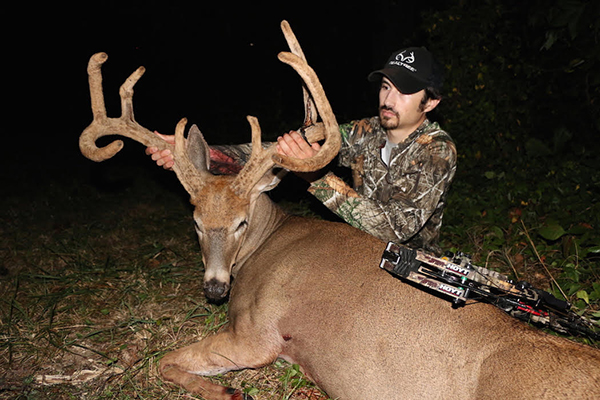
I personally don’t have a preference. I know everybody has a different opinion on that topic. I’m like everybody else. I’m an average Joe deer hunter. I can’t hunt every day of the week. I have to pick and choose my battles there. I would say that if you can get out there right before the cold front moves through, during or right after, whatever your schedule allows is going to be good. Anytime around that cold front is going to be better than it was the few days leading up to it. The key thing is change. It doesn’t have to be a cold front either. It can be a warm front. A sharp increase in temperature oftentimes gets deer on their feet too. I don’t think it has quite the effect that a cold front does, but a sudden change in the deer’s environment, whether it’s an increase in temperature or a decrease in temperature.
If it’s been sunny all week long and then you get overcast skies where you get some light rain that comes in. I don’t think deer like changes. I think it gets them on their feet. I like coming in the backsides of those cold front probably, but I also like on the front sides of those cold fronts too. The reason I say that is because a lot of the time the front sides of those cold fronts have some weather with them, whether it be some rain that comes through. I like to hunt through the rain. Deer move during the rain. As a matter of fact, the deer that I killed was during the rain. If you can hunt the front side and back side, great. If you can hut as it’s dropping, that’s great too. You’re going to see an increase in the likelihood of success regardless of which of the three you go with. My answer to that would be all three if you can.
When we think about the early season, you’re in Kentucky, when does your season open up?
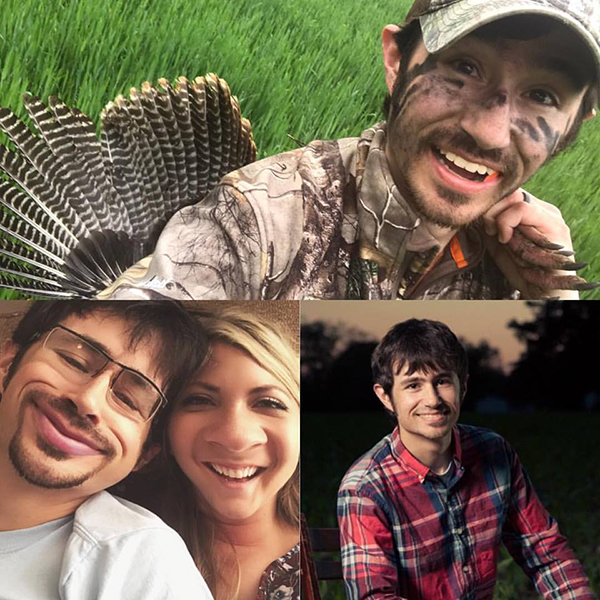
It’s always the first full weekend in September.
They’re probably still in velvet. Their antlers are hardening. When does that usually occur?
It’s a little bit different every year. There’s a window there and it depends on the individual deer, but it can be as early as the first few days of September. It could be as late as September 15th, September 20th. I know it’s different everywhere you go in the country, but that’s how it is here. A prime example would be I killed my deer on September 5th. By the time I actually recovered the deer, it’s right around midnight, so it may have been September 6th by the time I recovered the deer because I gave him several hours. That deer that I killed, he was in velvet, but the big mature four-and-a-half-year-old nine-point deer that he was running with, that deer was already clean out a velvet when I shot my deer on the 5th. The reason I know that is because I saw them both come out at the same time. He was still in velvet and had one little pill coming off of his G2. My deer, I’d say if I hadn’t shot my buck when I did, he would have probably come out of velvet within 24 hours at most 48 hours.
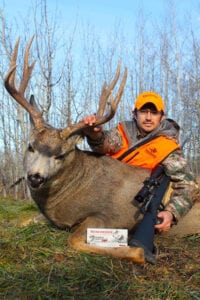 When you think about the break up of bachelor group because if you’re long distance scouting during the summer, you might see a number of bucks running together and hanging together. All of a sudden, they shed velvet and the bones harden. Do you see a typical dispersal of the bachelor groups?
When you think about the break up of bachelor group because if you’re long distance scouting during the summer, you might see a number of bucks running together and hanging together. All of a sudden, they shed velvet and the bones harden. Do you see a typical dispersal of the bachelor groups?
It’s one of the triggers. When the velvet comes off and they’ve rubbed up velvet and they start sparring and they start tanking antlers, it is the trigger. Based on my experience, they don’t break up as soon as that velvet comes off. I think the primary decider of when those bachelor group breaks happen is of testosterone levels rising. That’s what triggers the velvet to shed and to come off, but I don’t think that the testosterone has risen to the point yet when the velvet comes off for those bucks to get mad at each other and disperse. I think as the summer progresses, you’ve got low testosterone levels. When you look at the grand scheme of things, they have low testosterone levels, especially compared to the fall.
You get to the end of the summer and then sometime in early September, those testosterones have risen high enough that it causes the velvet to shed. The deer start sparing a little bit, maybe a few days go by or maybe a couple of weeks go by, then the testosterone gets to that point where they start getting mad at each other. They don’t want to be bedding close to one another. I think that’s what causes the bachelor groups to break up.
One thing that I’ve seen and all the people I’ve seen, Josh, is that early in September, you’ll see what I call football scrapes, about the size of a football. I’ve come to understand that they’re made by young bucks that all of a sudden the testosterone is increasing and they want to start the process. What are your thoughts on that?
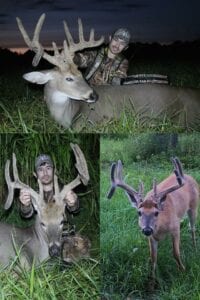 I don’t know if I could answer that question. I’ve seen those smaller scrapes during the early season. I found scrapes during the spring and this summer. The intensity and frequency are much higher in the fall. I have seen buck tend to scrape in June. They will scrape year-round, but I don’t think that they get in their head to do it as often as they do it during the rutting until it gets that time. Personally, I think sometimes depending on what’s located, you’ve got different types of scrapes. If a scrape doesn’t have lick and branch over I think it’s a scraped that a buck made out of frustration, maybe it was a display of dominance. If it has a lick and branch over it though, it’s probably a scrape that’s going to get hit more than once. If it’s a small scrape, there may be only one buck that’s tending to that scrape. If you see a massive scrape it’s probably what a lot of people were referred to as a community scrape that multiple deer are using. That would be my long-winded roundabout halfway answer to that prompt.
I don’t know if I could answer that question. I’ve seen those smaller scrapes during the early season. I found scrapes during the spring and this summer. The intensity and frequency are much higher in the fall. I have seen buck tend to scrape in June. They will scrape year-round, but I don’t think that they get in their head to do it as often as they do it during the rutting until it gets that time. Personally, I think sometimes depending on what’s located, you’ve got different types of scrapes. If a scrape doesn’t have lick and branch over I think it’s a scraped that a buck made out of frustration, maybe it was a display of dominance. If it has a lick and branch over it though, it’s probably a scrape that’s going to get hit more than once. If it’s a small scrape, there may be only one buck that’s tending to that scrape. If you see a massive scrape it’s probably what a lot of people were referred to as a community scrape that multiple deer are using. That would be my long-winded roundabout halfway answer to that prompt.
Let’s talk about your three specific tactics for early season hunting.
I don’t know that there’s any specific tactic that I deploy. I don’t call or rattle during the early season. It’s all about whitetail behavior and more or less trying to get in that deer’s way. More times than not, I’m hunting a specific deer because I spend so much time scouting, glassing and running cameras. I am targeting a buck. There might be a couple of bucks on the farm that I’d shoot, but I’m game planning around one specific deer and then if I’ll see another good target buck that’s either on my radar or not, I’ll take the opportunity to shoot that deer. I won’t pass up on a good buck because I’m hunting a different buck. I’m trying to figure out what his pattern is, where he’s bedding, where he’s feeding and I’m trying to get between the two. I’m trying to get as close to that in bed as I can without spooking him. If I’m hunting a deer that’s willing to travel 200 or 300 yards during daylight, then yes, sure, I’ll get back off the bed and closer to the feed.
That first good 20-degree drop is the perfect cold front that every hunter dreams about. Share on XThat’s part of what I’m trying to figure out during the summer and the preseason, but I’m focused on a deer that I know doesn’t move very far from his bed during daylight. That’s the case whether we’re in the early season or whether it’s the late season. If I know it’s a deer that does not like to move from far from the bed during daylight, I’m also creeping in and getting closer to that bed. The closest I like to get to a particular buck bed is probably about 90 to 100 yards. I don’t like to get much closer than that. You can definitely get closer if the conditions are right and if you have the good wind. At least nine, ten miles an hour and you know you got some wind cover there that covers your noise. There are different circumstances and different situations. It’s a fluid answer. It’s not always a constant. I’m trying to figure out what that deer are doing and put myself in that deer’s way.
With that, we’re going to wrap up early season tactics and strategies with Josh Honeycutt from Realtree.com. Josh, thanks for being on the show. We’re going to do a part three where the readers will find out about Josh’s favorite time to hunt during the rut.
Important Links:
- Realtree.com
- https://www.Realtree.com/deer-hunting/videos/the-reason-for-the-hunt-early-season-deer-hunting-and-droptine-bucks
- https://www.Realtree.com/users/jhoneycutt
- https://www.QDMA.com/author/joshhoneycutt/
- https://WhitetailRendezvous.com/early-season-special-josh-honeycutt-realtree-huge-velvet-8-pointer/
About Josh Honeycutt
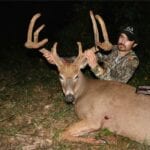 Josh Honeycutt is a back-country deer hunter from Kentucky who grew up slinging arrows and bullets at pressured river bottom whitetails. If it’s deer or turkey season, you’ll find him high in an oak tree or sitting up against one. And he enjoys spending that time in the outdoors with his wife, Kathryn, as well as the rest of his family and friends.
Josh Honeycutt is a back-country deer hunter from Kentucky who grew up slinging arrows and bullets at pressured river bottom whitetails. If it’s deer or turkey season, you’ll find him high in an oak tree or sitting up against one. And he enjoys spending that time in the outdoors with his wife, Kathryn, as well as the rest of his family and friends.
Josh has hunted the prairie whitetails of Kansas to the river bottom bucks of Kentucky to the pine-dwelling deer of South Carolina. Simply put, he loves to hunt deer. And it doesn’t matter where, either.
His passion for the outdoors led to a career as an outdoor writer, photographer, and videographer. Josh has been a regular contributor to Realtree.com since 2012 and came on board as the associate editor and deer hunting editor in July of 2015. He writes the Brow Tines and Backstrap blog. His work has been published in nearly 50 publications and websites including Field & Stream, Outdoor Life, North American Whitetail, Whitetail Journal, Game & Fish, Fur-Fish-Game, and more.
